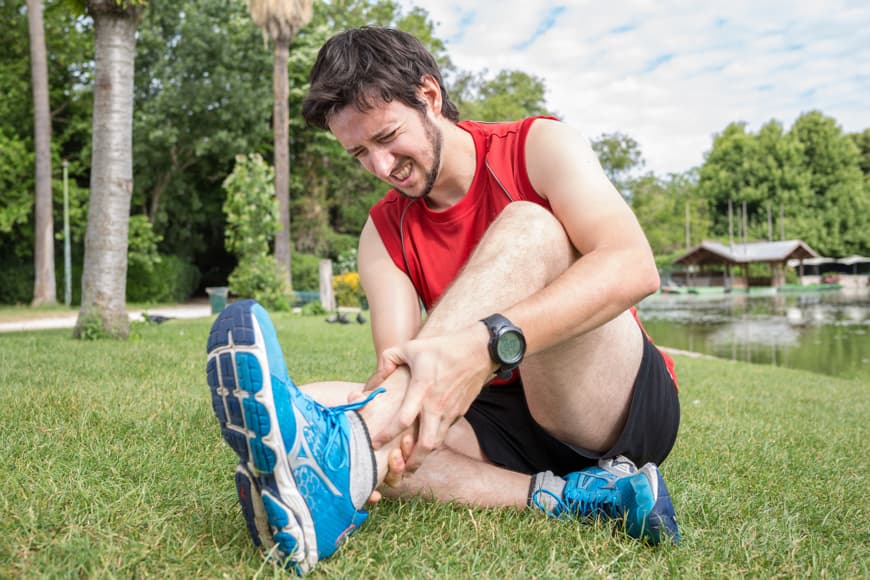SPRING HEALTH NEWSLETTER
Finally, Spring is here, and it is definitely a welcome break from the cold days and snowy driveways. It has been a long and tiresome winter for many, including myself both mentally and physically. I lost a dear friend this winter due to untreated depression, so part of this newsletter will be about how to help family members and friends with depression and suicidal tendencies, recognizing the symptoms and when to get seek help and care they need.

In this newsletter:
- Helping Family Members and Friends with Depression and Suicidal Tendencies
- Healing Muscle Strains and Sprains Naturally
- Asparagus and Sweet Pea Salad with Buffalo Mozzarella Shavings
HELPING FAMILY MEMBERS AND FRIENDS WITH DEPRESSION AND SUICIDAL TENDENCIES

Depression is often a word used to describe a person feeling sad or down. Although it is used loosely in some instances, depression is quite serious and is often described as a black hole of hopelessness and helplessness. Although the main cause of depression is believed to be an imbalance in brain chemicals, it can be much deeper and more complicated. There is no “scientific cause” for depression. Anyone can get depressed and the circumstances causing depression in individuals vary hugely from person to person.
While women are more likely to get depressed due to hormonal changes during puberty, menstruation, menopause and pregnancy, men are also targets for depression. The difference between men and women are that men often go undiagnosed, because they are less likely to seek help. Instead, their actions might come out as feeling angry, and hostile, as they attempt to hide their symptoms. Elderly can also become depressed after, for example, losing a loved one, coping and learning to live alone, becoming physically ill and being less active.
Depression usually spurs due to a combination of several things, such as:
- Family History - Genetics, depression can run in the family for generations.
- Trauma and Stress - Experiences and events such as financial problems, the breakup of a relationship, death of a loved one, significant changes to your life or lifestyle – such as starting a new job, graduating from school or getting married, pregnancy.
- Pessimistic Personality - Having low-self-esteem or having a negative outlook.
- Physical Condition - Problems such as serious medical conditions – heart disease, cancer and HIV can contribute due to physical weakness and stress. Depression is also known to weaken the immune system and can therefore make physical pains hard to bear.
- Psychological Disorders - Anxiety, eating disorders, schizophrenia and substance abuse can also lead to depression.
Depression can also be a result of other mood-altering disorders, such as dysthymia, seasonal affective disorder, post-partum and bipolar disorder.
SIGNS AND SYMPTOMS OF DEPRESSION
Signs and symptoms of depression often go beyond feeling sad or down. Below is a list of other symptoms that may be a sign of depression:
- Having no energy or being unable to concentrate
- Experiencing irritability for no apparent reason
- Feeling down or sad for more than two weeks and having these feelings interfere with your daily life and activities
- Having previously been depressed
- Harming oneself, believing things will not change or get better
- Decreased interest or pleasure in hobbies or activities that were once enjoyed
- Having thoughts of suicide or death
- Changes in appetite, leading to significant weight loss or weight gain
- Changes in sleeping pattern
- Withdrawal from social aspects of one’s life
- Feeling restless or ‘slowed down”
- Lack of or significant changes in motivation
- Decreased ability to make decision
SUICIDAL TENDENCIES
Today in Canada approximately 11 people will end their lives by suicide! In addition, approximately 210 others will attempt to end their lives by suicide today. Suicide is a critical public health issue in Canada and is one of the top ten leading causes of death, with rates increasing over the past 60 years. Males were three times more likely to die by suicide than females (1)
(1) https://suicideprevention.ca
If you know of a family member or friend who is experiencing some of the symptoms listed above, or having any suicidal tendencies, you can help save their lives and sanity.
THINGS THAT YOU CAN SUGGEST
- Get them involved in some form of therapy as soon as possible!
- Stay healthy and active. Getting out and getting fresh air every day is a great way to lighten the heart and breathe. Sun exposure is always great for mood.
- Planning and eating nutritious meals daily is a great way to start caring about your body and in turn the mind. Suggest a diet filled with nutritious foods such as plenty of fruits, vegetables, nuts and seeds.
- Drink plenty of water, and minimize intake of tobacco, caffeine and alcohol.
- Everyday tell them to find something they like – and it could be as simple as liking the color of their outfit, to change the mindset slowly but surely to a more positive one.
- Creativity is the best! What were some of the activities they enjoyed as a child. Get them to restart them as an adult.
There are various centers for mental health and crisis that you can suggest. There are lots of therapists: psychiatrists and psychologists in the city that they can seek out if they are open to it – you can be the support system for your friend of family member.
As a naturopathic practitioner – there are various natural supplements and remedies I use for patients who are feeling depressed. I also do a suicide assessment and a patient safety plan for clients as well. There are lots of resources available for patients with depression and suicidal tendencies and all they have to do is reach out.
HEALING SPRAINS AND STRAINS NATURALLY

If you have been rather inactive over the winter, starting up any form of physical activity such as running, jogging, cycling and yoga among other activities can lead to sprains or strains. Strains occur when muscles are overstretched. Sprains affect ligaments and usually happen when a joint is suddenly wrenched. Symptoms for both include pain, swelling, bruising, and stiffness in the affected area.
Here is what you can do at home for sprains or strains:
- First Aid for a Muscle Injury - Elevate the affected area immediately, and apply a cold pack to reduce swelling and inflammation. On the first day, apply the old pack to the injury for 20 minutes each hour for at least six hours. On the second and third days, apply the cold packs at least three times a day for 20 minutes at a time. To minimize the swelling, wrap the injury with an elastic compression bandage.
- Making a Cold Pack - Rest the injured part as much as you can for several days. After the initial sharp pain and swelling subside, begin gentle stretching and move normally to prevent continues stiffness. The stretching helps to increase circulation to the injured area and prevents the build-up of scar tissue.
- Encourage Healing with Arnica - Arnica helps control swelling, bruising and inflammation. Apply arnica gel liberally to the injured muscle three times a day until the injury has healed Caution: Do not apply arnica to broken skin. We do carry a variety of creams and gels for sprains and strains at the clinic available for purchase if you are a client of the clinic.
- Alternate Heat and Cold to Speed Recovery - After the swelling and pain have lessened, apply alternating heat and cold to the affected area to increase circulation and speedy recovery. Apply a hot pack for three minutes then a cold pack for two minutes. Repeat the sequence three times, ending with cold pack.
- Ease Pain with a Hot Salt Pack or Beanie Bag - A hot salt pack can ease pain and stimulate circulation, which in turn speeds healing. Heat one pound (500g) of salt in a heavy pan. Funnel the hot salt into a clean, heavy sock. Do not overfill the sock—it should be pliable, like a heated beanbag. Pin the end securely with clips or a tie back and apply the warm sock to the painful muscle area. Leave in place for 30 minutes.
- Prevent Stiffness with Aromatherapy Massage - Regular massage helps to prevent the residual stiffness from the muscle injury. We do offer aromatherapy relaxation and therapeutic massage and acupuncture combos with essential oils at the clinic for fast recovery so if you are interested in either, please call the clinic to schedule an appointment for either of these services.
ASPARAGUS AND SWEET PEA SALAD WITH BUFFALO MOZZARELLA SHAVINGS

Ingredients:
- 1 pound of asparagus, ends trimmed, cut diagonally into 2-inch pieces
- ½ small red + green bell pepper diced
- ½ red onion thinly sliced
- ½ cup of cherry tomatoes
- 1 cup of sweet peas
- 3 cups of baby arugula (washed)
- 1/3 cup chopped pecans or walnuts toasted
- ¼ cup of buffalo mozzarella shredded
- 1 teaspoon of sesame seeds
- 2 tablespoons of reduced balsamic vinegar
- 2 tablespoons olive oil
- 1 tablespoon Dijon mustard
- ¼ tsp of wasabi paste
- 1 tablespoon chopped coriander
Instructions:
- Mix in the reduced balsamic vinegar, oil, mustard, coriander, sesame seeds and wasabi paste.
- Season your dressing to taste with salt and pepper.
- Cook the asparagus along with the sweet peas in large pot of boiling salted water until crisp-tender, for about 6 minutes.
- Drain; rinse with cold water and drain again.
- Add asparagus, sweet peas, tomoatoes, bell peppers, onions, to the dressing in a large bowl; toss to blend well. Sprinkle with the walnuts or pecans with the shredded cheese and enjoy!
For any questions, or concerns, or to schedule an initial naturopathic appointment, please contact us at 416 913 4325 (HEAL) or email us at [email protected]
* DISCLAIMER: The information on this article is the property of Dr. Sushma Shah, Naturopathic Doctor, and is not intended to treat, diagnose or cure any diseases or promote any services or products mentioned on the website.
Related Articles
Acne
Acne is a common skin condition with a prevalence of 80% in female and 90% in male teenagers. It is caused by a disorder of the oil glands that result in clogged pores and outbreaks of lesions commonly known as pimples. Risk factors: poor diet, excessive sugar, trans fats and processed foods.
Candidiasis
Candida overgrowth in the gastrointestinal tract is now becoming recognized as a complex medical syndrome known as chronic candidiasis or the yeast syndrome. Symptoms include: Multiple food allergies, or allergic to all foods( pan allergic), alternating diarrhea with constipation.
Chronic Fatigue
Chronic Fatigue Syndrome (CFS) is described as a severe, debilitating fatigue, lasting at least six months (of new and definite onset), associated with at least four of the following symptoms: impaired memory or concentration, sore throat, muscle pains, joint pains, unrefreshing sleep and post-exertion malaise.
Irritable Bowel Syndrome
Irritable bowel syndrome (IBS) - a diagnosis of exclusion, this condition is often misdiagnosed. Severe food intolerances / allergies may exhibit symptoms that are similar to Irritable Bowel Syndrome such as pain, cramping, gassiness, sudden bouts of diarrhoea, and constipation.
